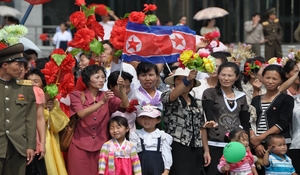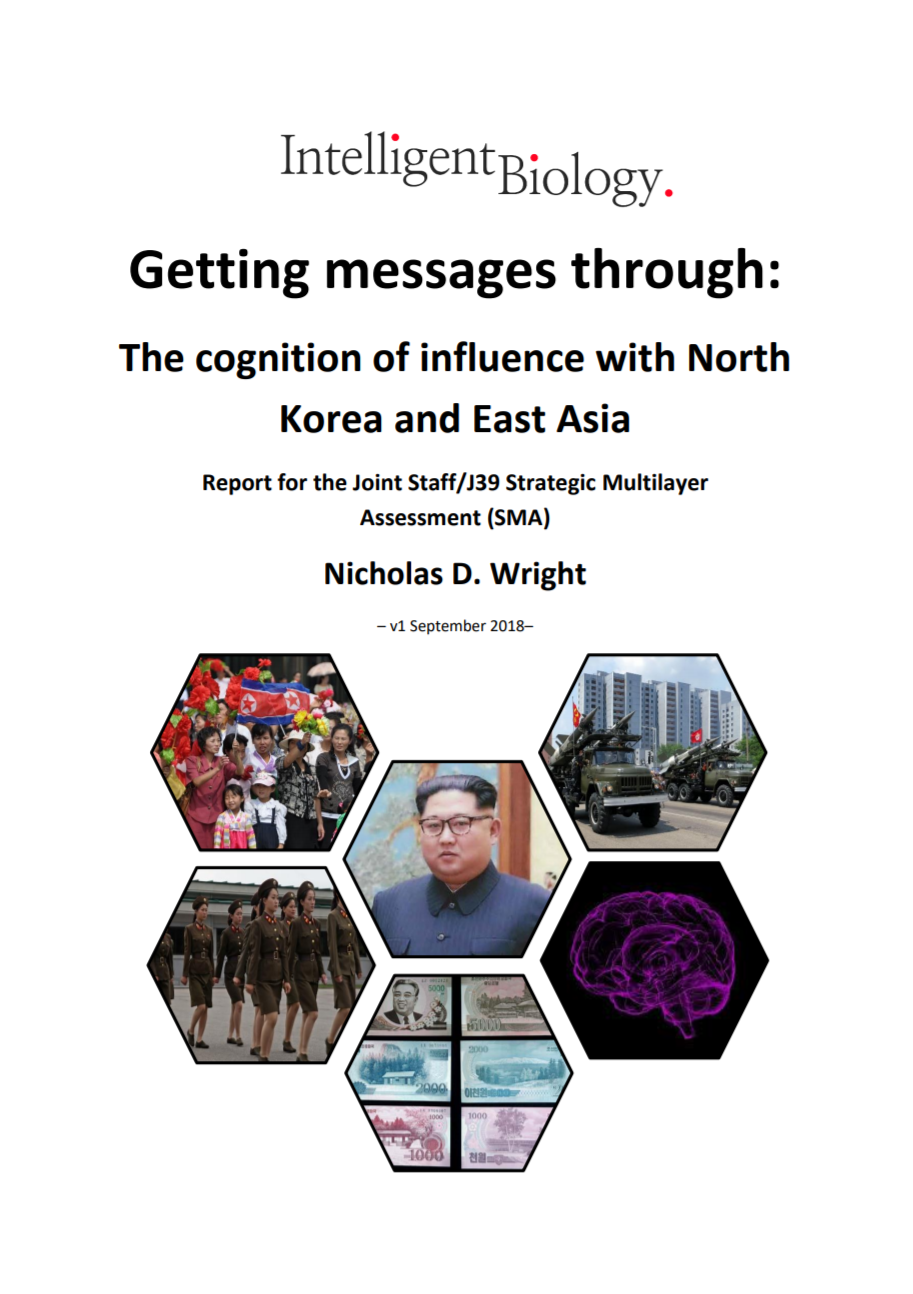Getting Messages Through: The Cognition of Influence with North Korea and East Asia

Getting Messages Through: The Cognition of Influence with North Korea and East Asia
Author | Editor: Nicholas Wright (Intelligent Biology)
Executive Summary
To cause intended effects—and avoid unintended effects—in the fiendishly complex regional environment surrounding the Korean peninsula, United States policymakers are required to understand both what motivates key actors and what type of strategic confrontation they face. To these ends, this report applies core insights from the cognition and neuroscience of decision-making, combined with data from historical and contemporary cases of decision-making such as the past 50 years of Democratic People’s Republic of Korea (DPRK) military-diplomatic campaigns. Two broad sets of conclusions emerge. The first arise from analysing core cognitive dimensions of what motivates the DPRK and key regional actors. These include:
(a) Managing unpredictability is a central challenge for U.S. policymakers: The DPRK has skilfully manipulated unexpectedness to maximise the impact of its diplomatic and military actions for over 50 years – U.S. policymakers must manage those effects on themselves, U.S. domestic audiences and allies. For allies such as the Republic of Korea (ROK) or Japan, the U.S. must also manage the unexpectedness of its own actions, as unpredictability often damages the trust on which rests U.S. credibility and extended deterrence.
(b) Fear drives much regional behavior – and because the DPRK, ROK, U.S., Japan, China have fundamentally different and mismatched fears no single solution can address them. For instance, a key DPRK fear is personal death for the leadership; a key Japanese fear is China’s rise; China’s overriding fear is the U.S.; the U.S. fears DPRK intercontinental nuclear weapons. Only coordinated action on all fronts can address these fears.
(c) Fairness: Rejection of perceived injustice fuels Sino-Japanese and ROK-Japanese antagonism, as well as Japanese concerns over abductions – all destabilizing any regional peace process. Any deal must be perceived as fair or it likely won’t stick.
Second, the U.S. must understand what type of conflict it faces – a “Grey Zone” conflict. North Korea has conducted “Grey Zone” conflict for most of the past half century, literally neither fully at peace nor war. Grey Zone conflict also increasingly characterises regional competition between China, Japan and the ROK. This provides a powerful new lens to understand and manage this devilishly difficult DPRK confrontation and its regional ramifications. Managing Grey Zone conflict requires particular tools. It is necessarily limited conflict. Thus, the central aim is to influence the decision-making of adversaries and other key audiences, rather than removing their capacity to choose using brute force in itself. I apply evidence-based tools for influence in the Grey Zone (Wright 2017, Cognition in the Grey Zone), examined in the historical and current cases noted above. The U.S. retains a portfolio of unused Grey Zone actions it can threaten or apply to the DPRK, e.g. extensive information operations in the DPRK to decrease regime power. Understanding the Korean challenge as a Grey Zone conflict helps the U.S. anticipate and manage regional implications with allies (e.g. ROK and Japan) as well as competitors (e.g. China and Russia).

Comments